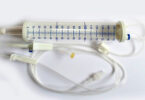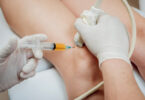The biomedical model can be committed to change and creation both in the aspect of diagnosis and therapeutic treatment.
The biomedical model is a prototype of health sciences that addresses disease as a strictly biological problem.
This discipline considers that health and illness are aspects that depend entirely on the patient’s body.
The biomedical model arises with Hippocratic medicine, for which disease is a neutrally diagnosable disorder of the human Physis.
The aspects that characterize the biomedical model are the following:
- Bases its study on the physical and chemical aspects of health.
- Focuses on curing the disease.
- Prevention of the disease is not its main objective.
- The psychological, social or environmental aspects of the patient take a backseat.
Biomedics in a hospital or public care setting are qualified professionals who work in the diagnosis, treatment and research of diseases.
- They work hand in hand with doctors, nurses and other health professionals to provide comprehensive care to patients.
- They carry out analysis of laboratory samples to detect diseases and evaluate the effectiveness of treatments.
- They participate in scientific research.
- They use cutting-edge technology.
- They promote the promotion of healthy lifestyles.
- Biomedics in a hospital play a vital role in improving the quality of life of patients.
Advantages and disadvantages of the biomedical model
The biomedical model has some important advantages, but also some disadvantages such as the following:
Advantages of the biomedical model
It works very well to treat communicable diseases
- Responds quite well when a problem or illness has already appeared.
- Work with explanatory hypotheses to understand the total function of the human body.
- They generate curative treatments.
The Disadvantages of the biomedical model:
- It presents weakness when it comes to preventing an illness.
- Ignores the psychological, social and environmental aspects of the patient.
- It responds in a limited way when treating diseases that do not have a specific and well-defined cause.
Thus, the biomedical model works very well in the diagnosis and treatment of certain diseases, but it presents some important limitations when treating other diseases with different causes.
Due to this, more and more health professionals are advocating a combined use of the biomedical model and another model that does consider other aspects related to the patient’s health.
Difference between biomedicine and medicine.
Biomedicine focuses primarily on scientific research at the molecular level to understand the origin of diseases, while medicine focuses on the direct application of medical knowledge to diagnose, treat and prevent diseases.
In this sense, we can conclude that the biomedical model makes the health professional responsible throughout the process, reducing the patient’s active participation.
On the other hand, this discipline is considered to have great potential within medicine.
Therefore, biomedicine will always be an important discipline to continue advancing in the field of health.
FONT
https://ifdcsanluis-slu.infd.edu.ar/sitio/upload/MODELO%20BIOMEDICO%20y%20BIOPSICOSOCIAL.pdf
https://iqs.edu/es/blog/que-es-la-biomedicina-carrera-de-ciencias-biomedicas/
https://www.uax.com/blog/diferencias-biomedicina-medicina
https://psicologiaymente.com/clinica/modelo-biomedico
OTHER ARTICLES OF INTEREST
Optogenetics controls the brain using light
https://www.medicalpharmanews.com/en/optogenetics-controls-the-brain-using-light/









